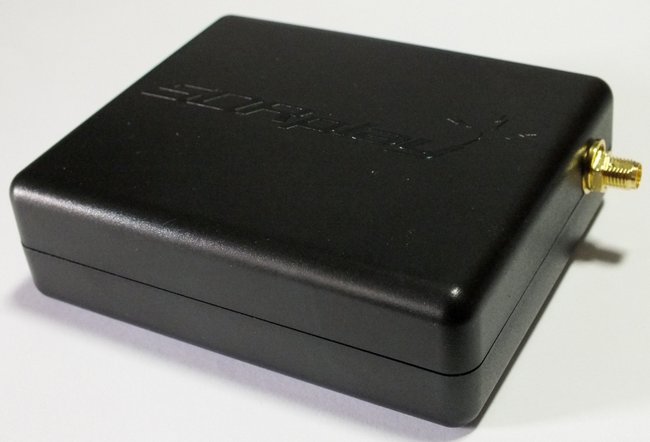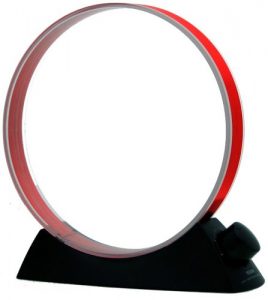Yesterday, an SWLing Post reader contacted me with questions regarding budget antenna choices for an urban apartment. He’s about to purchase an SDR, but knows that a decent antenna capable of coping with urban radio interference is a critical component.
I suggested that, since I’m no expert with urban interference, he pose his question to the SWLing Post community. Here’s his reply and request:
I know I’m a little behind some of my other radio friends, but I’m finally moving up to a software defined radio. Specifically the affordability of the SDRplay RSP and all good reviews for it have encouraged me to make the leap.
I suppose it should go without saying that once I purchase an SDRplay I would like to use it, which might not be so easy. I live in a big city full of RF pollution, and most of my listening will be in a room where there’s a fair amount of electronic gadgetry.
So, without spending a lot of money, I’m curious if any of your readers might have suggestions about what I might purchase as a “starter kit” for a new SDR user in such a scenario. I also plan to take the SDRplay with me when I have forays out of the city, but I envision that some sort of long wire might be sufficient for listening out in the countryside.
I live on the second floor in an urban apartment, and have two windows in the room where I’ll be listening. There is zero chance that I can hang or attach anything on the outside of the house here. So, my most pressing question is about antenna ideas. I’ll need something inexpensive, as I mentioned, and something “off the shelf.” I don’t have the skills or tools to really “build” anything, unfortunately. So is there some less than pricy antenna or antennas I should look at? Or is there some hope of doing something with a long wire indoors?
And will my little Tecsun AN-100 AM loop antenna going to help me at all? I mostly plan to listen to MW and the HF bands, but I will inevitably check out signals far up the bands as well. So advise about listening to these bands is also of interest to me.
Other than that, I understand it’s important to attach the SDR to the laptop with a USB cable with ferrite chokes. And it probably wouldn’t hurt to buy some extra ferrite chokes to attach to other cables I might be using. I also plan to buy a NooElec mini-balun for use with a long wire antenna, and I already purchased a PowerMate USB knob because I still prefer to do my “tuning” that way.
So other than those basics my questions would be regarding connecting cables and adapters, and the best lengths of cable to use. Should I have some cable between the balun and SDR? I believe I’ve read that it’s better to have a longer USB cable and a shorter coax to the antenna, correct? And when it comes to using a wire antenna, are there preferences as far as what type or gauge of wire to use?
I am also interested in any general suggestions or tips from SDR users on getting started. In general, I’m pretty good with navigating through software, it’s usually the hardware issues that stump me. I’m looking to spend between $100 to $150 tops on everything besides the SDR, and I’d like to hear about peripherals, cables, adapters and connectors which when added all together won’t bust my bank.
I’m sure there’s plenty of people who read this wonderful blog who have plenty of useful knowledge regarding SDR listening on a budget. And I hope a few could share a little of their experience and collected wisdom on this topic here, for me and for others considering turning their computers into receivers…
Indeed. I appreciate this reader’s question, since many listeners live in environments with heavy radio interference. While we’ve published a number of posts touting the virtues of magnetic loop antennas, I don’t think we’ve ever looked for solutions at or below $150 US. While this may be a challenge, I’m also certain there are a number of readers who’ve found solutions to this problem.
So, Post readers, what might you do–or have you done–in similar circs? Please feel free to comment, and let’s explore inventive and affordable solutions for this reader!




I’ve got to admit. I like the idea of an un-amplified loop. True, you have to build it yourself, but it’s not terribly hard–the principle of it’s pretty straight-forward. Perhaps you could find someone to build one for you.
My buddy, Vlado, lived in an apartment when he moved to the States. It was very noisy on his radio, but he’s an avid amateur radio operator. He built a simple passive loop antenna with some copper plumbing and probably worked 100 countries or better with a low-power transceiver. In other words, they work. You could probably tweak the RSP’s settings to amplify the signal from a passive loop a bit more.
Maybe someone (local) would be willing to sell one?
I’m glad so many readers have been offering input. It’s such a challenge to amplify your target signal without amplifying the noise in a radio noisy environment.
For someone in an apartment, it makes more sense to start with a loop than an LNA. The LNA would just amplify the noise. However, with experimenting with a larger unamplified loop, the listener MIGHT be able to find a quiet part of the apartment (by finding the location that the null suppresses most of the noise) which would justify getting the amplifier later. The cost for building an unamplified loop that is bigger than the small AN-100 might be around $25 – $50.
Just trying to help him prioritize. So many ways waste your money, I know from personal experience.
For a loop with 1m of diameter you need:
* 3 m of RG-214, about 6 EUR
* 1 small magnetic core, 1 EUR
* 20 cm of enameled copper wire (see junk box, old transformer)
* a few m of RG-58, about 10 EUR
* 1 coax connector, about 2 EUR
* 1 small box for the connection between loop and coax cable. about 2 EUR
Some means to hang the loop to the wall.
1 EUR = 1,12 US$
Here…
http://www.sdrplay.com/community/viewtopic.php?f=8&t=627
I wrote about the RSP1’s built-in LNA and how it can help with antenna woes. The post starts with how I used simple loops made out of some rigid wire indoors, very much in the way e.g. the Wellbrook loops work (just without any external LNA), with surprisingly good results.
At the price of an SMA connector and some 4mm copper wire you can make some experiments with the RSP1 to find out e.g. whether or not buying a Wellbrook loop even makes sense for you.
A LNA is simply that: a Low-Noise Amplifier. It makes the SDRplay a very sensitive receiver that would easily overload on an outdoor antenna. Therefore you mostly avoid the LNA below 50 MHz or so. See the beginning of my note about active antennas above.
Another important term above is “loop”: If you connect a coax cable to it and even add a current yoke, no unsymmetric currents appear on the cable. Therefore neither the cable nor the attached receiver get part of the antenna. This greatly reduces your problems with local, man-made noise.
The loop could be improved quite easily:
* Reduce its inductivity by using a *thick* conductor. RG-213 is quite handy for this as it is relatively flexible. You could also use some copper tubing.
* With an overly sensitive receiver like the SDRplay with the LNA and a short cable you might get away without an active component in the antenna.
* Try a transformer with the high-impendace side at the cable. The loop has a very low impendace and the thick inductor lowers it even further – increasing the current inducted into the loop by the magnetic fields.
I might suggest rethinking your purchase of the SDRPlay. I have one and am in exactly the same condition as as you are. I tried every conceivable combination of antenna for the SDRPlay, but to no avail. I also have a new a Tecsun PL-880 and with the same antenna trials as the SDRplay, I get incredible reception. Put the $149 for the SDRPlay into a Tecsun PL-880 for $159 from Universal Radio. You won’t have any of the antenna challenges that you will with the SDRPlay. I even bought a brand ne computer for the SDRPlay, still no satisfaction. I will probably try to sell it on eBay. Huge disappointment!!!
You do not describe a problem of the SDRplay – I have one and use it as my main receiver. You have a problem with your your antenna system: If you make enough digital electronics part of your antenna you will hear nothing but that digital electronics.
A radio like the Tecsun PL-880 contains a single-chip processor. 99.9% of all digital signals never leave the perhaps 2mm x 2mm processor chip. The rest is rarely active, i.e. the I2C bus that controls the peripherial chips. The same is true for the SDR chips that make up most of the radio functions. These very small systems can be shielded effectively so you can make the radio part of the antenna with little ill effects. You might hear some noise as you change the frequency, while the I2C bus is active. This might be why many radios mute while you change the frequency.
If you do nothing but connect a length of wire to the antenna jack of your radio you will get problems as soon as you use the power supply to operate the radio. Adding a grown-up computer will do the same.
In this blog you can find enough of my contributions that discuss possible solutions.
An SDR like the SDRplay gives you so much more possibilities than a conventional radio set that you should go the SDR way whenever practical. If all you want is a radio for listening to the news from a hotel room, get a set like the Tecsun PL-880. If you are curious and want to listen to radio amateurs or DX stations, the SDRplay is a great way to go.
Hi from SDRplay: it sounds like you are set to do quite well with the Tecsun loop antenna, although the problem is always picking up noise inside your building. People do have great success with lengths of PVC covered wire (as cheap as you can get) – as long as possible and well away from electrical wiring. Remember that you will need to ground the outer connecting of the RSP coax socket – – a counterpoise is just as good, if not better if you are upstairs- see https://en.wikipedia.org/wiki/Counterpoise_(ground_system) – The more expensive Wellbrook loops http://www.wellbrook.uk.com/ are very effective. Another idea is to have a coax screened cable (SMA plug to SO239 connector) which ensures signal pick-up starts outside the building – there you connect the external long wire which, especially if you are high up, could dangle down the outside of the building, or better still slope to an insulator and a tie to some support away from the building.
For VHF/UHF then get something as close to the window as you can – a Discone tends to take up a lot of room so quarter wavelength lengths of wire with a groundplane are a good idea or consider a half wave dipole for particular frequencies of interest.
It is a game of trial and error and we encourage joining a community like the Facebook group run by Paul Jones and Mike Ladd on https://www.facebook.com/groups/sdrplay/ is a perfect place to swap ideas with over 3000 other SDRplay RSP users. For people who don’t like Facebook there’s our moderated forum on http://www.sdrplay.com/community/
We wish you all the best and lots of fun with the RSP 🙂
Jon, on behalf of SDRplay
Man!!! I remember trying to DX from the GND floor of a complex. Not fun, but certainly challenging. Just recently, I heard a QSO on the 10M band where one dude was in an APT and he stuck and hung a wire out on a fishing pole temporarily. He got out.
“Active antenna” is a good start point. Such an antenna relies on the fact that the natural and man-made noise up to 30 MHz or so is high enough that some noise from a specific amplifier will not be noticable. Bottom line: Such antennas can be quite small.
Active antennas come in two flavours: “electrostatic” and “magnetic” – just like the double nature of electromagnetic radiation.
Electrostatic active antennas like the “mini-whip” use some conductor and a high-impedance/low-capacity amplifier. They are very simple to build, but cannot be used in or near buildings: Most of the man-made noise is electrostatic by nature. So this is no solution here. I successfully operate one. But it is at the end of my garden, some 10 m from the house.
Magnetic active antennas come in two flavours: selective and wide-band. The Tecsun AN-100 from above is of the selective variety: Some kind of loop is connected to a variable capacitor forming a resonant circuit. They are easy to build and quite cheap, but unconvinient: They are very selective. You need to tune them all the time. But quite often this selecivity improves the large-signal response.
The wide-band variety uses a “short-circiuted” loop, i.e. it is combined with a low-noise, low-impedance amplifier. The antenna kit that was discussed here recently is of this variety. Basically such an antenna compliments a receiver like the SDRplay. But these antennas need relatively large loops.
The cable to the receiver is more or less a non-issue: Losses are hardly ever a problem as an amplifier is in front of them. Current yokes are always a good idea. Most important is a “symmetric” antenna, i.e. the unsymmetric currents must be limited to the antenna itself. A “longwire” connected to the center of a coax cable is the opposite of a low-noise antenna as it makes most of the equipment a part of the antenna.
I have the AN-100 loop and it is very convenient but average results. That is best used as a portable unit in a park away from noise.
He might look into building a home made loop antenna. Parts are minimal cost and it does not have to be amplified yet until he is ready to experiment further. Here is an interesting link from a maker of amplifiers about how to make loop antennas:
active-antenna.eu/tech-docs/3_ActiveAA_Antena_11.pdf
I am looking at making something like this but I don’t want to use aluminum bar, too heavy and hard to work with:
http://www.ve1zac.com/A New Homebrew Magnetic Receive Loop at VE1ZAC.htm
I might use two 23 inch quilting hoops with copper foil just on the outside surface:
http://www.joann.com/wood-quilt-hoop-23in-3-4in-depth/2811016.html
http://www.ebay.com – copper sheet foil. I would get 0.1mm thick which seems thick enough to be sturdy but thin enough for ease of application. Thicker is too heavy and thinner is too fragile.
If you had money, you could get the Quantum Loop 2.0 from DXTOOLS.com, a bargain compared to anything else!
The nice things about the homemade loop is that it is broadband and you can add the amplification later without killing your budget! And there are other designs that can be googled than the one I intend to use.
Good Luck!
Don’t ask me why as this is against antenna theory but I have better results in HF with a 144/430 biband mag mount antenna placed on the window with succion cup attachment than with a 6 meter long random wire equipped with a 9:1 unun placed near the window.
Here is a picture of the antenna with succion cup support :
http://www.sebastien-billard.fr/tacticool/public/photos/antenne-144-430.jpg
Receiver is also an SDRplay.
Now I am still looking for better suggestions, but I am kinda amazed with this antenna so far